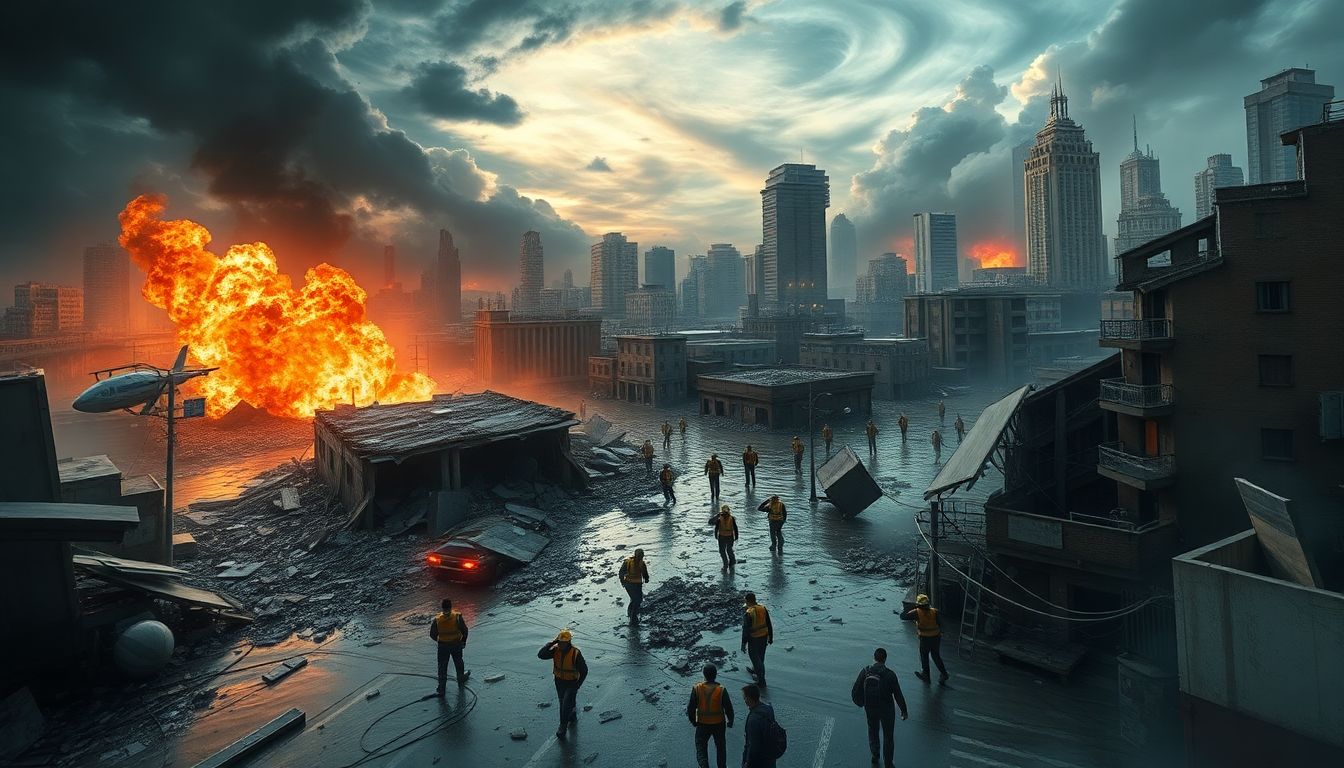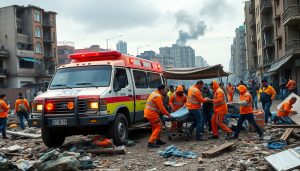Introduction
Disaster happens in the middle of the chaos in normal day-to-day life. These disasters come in many forms that shake our world and require immediate action. The more we understand the causes and behaviors of disasters, the better we can prepare and protect our communities. They have increased at an unprecedented rate and intensity due to climate change or human errors. Being ready is no longer a matter of choice; it is an obligation for governments, businesses, and individuals.
What is Disaster? Defining
A disaster is an event or occurrence that causes serious damage, disrupts normal life, and overwhelms the ability to recover rapidly. According to the UN Office for Disaster Risk Reduction (UNDRR), disaster means “a serious disruption of the functioning of a community or a society involving widespread human, material, economic or environmental loss and impacts.” Simply put, it is something unexpected that causes significant disruption to regular routines.
Characteristics of Disaster
Disasters are largely unpredictable and have the potential to be high in scale and damage. Unlike smaller emergencies, disasters affect large numbers of people or cause immense property loss. They often strike suddenly, leaving little time for preparation.
The Influences of Perception and Influence
Society often changes its perception of disasters based on the effects experienced. A storm might be minor in one place but devastating in another with fewer resources. Perception, location, infrastructure, and community resilience all influence how we define and respond to disasters.
Types of Disasters
Natural Disasters
These occur naturally but can be worsened by human activities. Types include:
Geological Disasters
Earthquakes, tsunamis, and volcanic eruptions originate within the Earth. For example, the 2011 Tohoku Earthquake and the 2014 Icelandic volcano eruption caused massive disruption and casualties.
Meteorological Disasters
These include hurricanes, typhoons, tornadoes, and storms. Recent hurricanes have caused billions in damage, showcasing the destructive power of weather events.
Hydrological Disasters
Floods, landslides, and avalanches are often linked to water and precipitation. For instance, the 2010 Pakistan flooding affected over 20 million people and caused massive economic losses.
Biological Catastrophes
Disease outbreaks like COVID-19, pest infestations, and foodborne illnesses fall into this category, often stretching health systems and disrupting society.
Man-made Catastrophes
These result from human activity and include:
Technological and Industrial Disasters
Examples include chemical spills, nuclear accidents (e.g., Chernobyl), and oil spills (e.g., BP Oil Spill in 2010).
Structural and Infrastructure Failures
Building or road collapses, like the 2013 Rana Plaza tragedy in Bangladesh, can cause massive casualties and reflect poor safety practices.
Conflict and War
Armed conflicts and terrorism devastate regions and displace millions, as seen in the Syrian civil war.
Complex or Hybrid Disasters
Natural disasters intensified by human activities, such as climate change, can evolve into long-term crises affecting ecosystems and livelihoods.
The Impact of Disasters
Social and Human Impact
Disasters cause death, injuries, mental health issues, and displacement. Recovery can take years, leaving lasting scars on communities.
Economic Consequences
They damage property, disrupt businesses, and lead to unemployment. The cost of rebuilding is often high and long-term.
Environmental Damage
Ecosystems are destroyed, water and soil polluted, and biodiversity reduced. Oil spills, for example, can have decade-long environmental effects.
Response and Recovery Challenges
Rebuilding infrastructure, managing health crises, and delivering aid require time and planning. Having disaster-response systems in place can save lives.
Preventive Measures and Preparedness
Assessment and Mitigation of Risks
Identifying vulnerable areas and investing in resilient infrastructure like early warning systems and drainage can reduce disaster impacts.
Community Preparedness
Awareness campaigns, regular drills, and knowledge-sharing are essential. Schools, local organizations, and governments play key roles in preparedness.
Policy and Legislation
Strong laws related to building codes, land use, and international collaboration help mitigate disaster risks and enhance recovery efforts.
Conclusion
Understanding disasters as more than just events—but as serious threats to human life and systems—is crucial. Risk assessment, training, and proactive management can make all the difference. With climate change and human factors amplifying these threats, united action is necessary. Preparing today ensures safety tomorrow.




